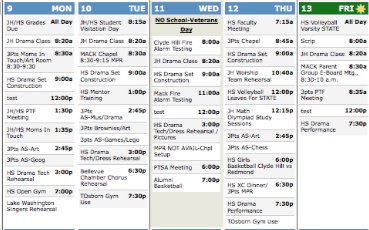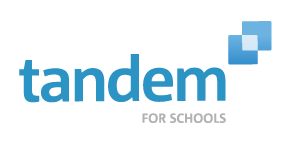Intand Has A New Home!
For everyone here at Intand, the last few months have been a whirlwind. As our company continues to grow and expand our offerings, we have gradually outgrown our space. To maintain our service, we needed a larger space to call home.
For two months, we slowly packed up our belongings, sifting through memories as we entered a new chapter in the Intand journey. Finally, the last week of May, we had everything ready. Thankfully, our new office is only a few miles away from the old office. Being close made it very easy for us transport everything to the new location. We hired some day workers to help with the move and they helped our moving team get everything into the new location.
Beforehand the floor plan was made, and the offices were allocated for each team member. The Support team is sharing an office with a view of the beautiful Mount Rainier. Next to them is the development team. They are sharing an office close to the conference room and on the other side of the conference room there is the sales bullpen. This is the loudest room in the building. Four sales representatives talking to our current customers and potential customers creates a very lively atmosphere.
The offices are rounded out by our COO Sherri Bealkowski keeping everyone organized and Bryan and Diane in the back corner creating and completing our visions of grandeur.
One of the greatest parts of our new office space is the lunch area. We are now blessed with a completely open lunch seating area where we can enjoy our pizza Thursday’s, bounce ideas off of our development team and we have ample wall space for white boards – the universal key to company innovation.
Take a look at some of the photos of our team putting together some cubicles and moving Intand to our new home!
One of Tandem for Schools proven cost saving benefits for school districts across the country remains its inherent ability to eliminate the need for printing paper calendars. From a business operations standpoint, the Tandem Team from Intand strives to go as paperless as possible as well. However, they too understand the unavoidable expenditures associated with occasionally printing various documents. It’s probably safe to assume that no business or school could entirely avoid printing altogether.
When printing is necessary, as an Associated Press article that reached a plethora of mainstream media outlets this week wisely pointed out, why not optimize all the intangibles to work in your cost saving favor? As the article’s title clearly suggests: Here’s a legal way to print money: change the font, the main premise is for schools and businesses to reformat documents heading for print to font styles that require less ink. Prolong the life of a disposable resource; what a brilliant idea!
This poses the question: just as we—i.e. most of us—naturally know to turn off the lights and adjust the temperature accordingly when leaving a room or building, why not continually look for other creative ways to optimize disposable (and non disposable) resources, and begin to save in ways that are not so obvious?
For other creative solutions regarding resource optimization, cost savings, and ROI particularly for school districts, someone from the Tandem Team is standing by to meet with you and demo the new Tandem for Schools Facility Rental module, released April 2, 2010.
 Customizable and convenient are the adjectives that best describe Tandem for School’s online calendar. The convenience of an online format is ideal for busy modern families, while today’s technology makes it possible to tailor calendars to suit individual needs. What advantages does Tandem offer parents?
Customizable and convenient are the adjectives that best describe Tandem for School’s online calendar. The convenience of an online format is ideal for busy modern families, while today’s technology makes it possible to tailor calendars to suit individual needs. What advantages does Tandem offer parents?
Convenience of Access
Accessing Tandem’s online calendar tool is as simple as logging on by computer or any internet-enabled device. Wherever and whenever an internet connection is available, parents can get the latest information on school events without having to rely on harried office staff for accurate updates. Never miss another chance to cheer on your team or forget to pick up your child from an after-school activity because the school’s front desk was closed!
Search, Filter, and Track Options
Whether your busy schedule leaves you short on time or you just prefer simplicity, Tandem’s search, filter, and tracking features are the answer. Tandem takes the headache out of keeping up with multiple schools and assorted extra-curricular activities. From the comprehensive calendar, choose to display just the events that pertain to your child. Need the latest information in a hurry? Simply enter the event you’re seeking into the search bar and you’ll be presented with all matches. Search and sort by keyword, group, school, or event with the option to view by day, week, month, or year.
In addition, it’s possible to access details from the calendar by clicking on an event to get contact and travel information and more. Need directions to an out-of-town game or band concert? Click “get directions” in the event detail display and you’ll be connected to Google Maps with the destination information ready.
Interested in following a particular team or club? Whether your child is a participant or you’re just a fan, use Tandem’s tracking feature to get the latest event information with email updates simply by clicking “track this group”. For even more convenience, choose “set reminder” for a given event and you’ll automatically receive an email notice for upcoming events. Designate a reminder interval and you’ll get an email alert hours in advance – the time-frame is up to you!
Integrate Tandem with your Personal Calendar
Maximize the potential of this helpful technology and enjoy the advantage of being able to export information to a personal calendar format like Google, iCal, or Outlook. Automate the process by synchronizing your own calendar with Tandem and the events you specify will be posted without having to lift a finger!
Added bonuses of online calendar’s like Intand’s version include print-capability and the option to subscribe to receive RSS feeds for updates. As registered users, parents can contribute photos and news briefs for events, as well as upload photos and forward email with event details to friends. Tandem takes some of the stress out of “parent involvement” so you can relax and enjoy these precious school years.
Based on a recent interview with representatives fro m the large Lake Washington School District, Tandem for Schools online calendar has proven a cost-effective school parent communication tool for the 21st century.
m the large Lake Washington School District, Tandem for Schools online calendar has proven a cost-effective school parent communication tool for the 21st century.
Confronted with the same kind of budget constraints facing school districts across the country, Communication Director Kathryn Reith found Tandem’s cost-saving aspect especially appealing. Eliminating the financial outlay for a printed parent calendar proved a painless belt-tightening measure since Tandem’s online format offers immediate access. Technology Program Manager Laurie Pelham reiterates that point. In a cost-comparison, Tandem’s ready-to-use calendar came out on top, sparing the expense of paying a programmer to tailor the calendar included in the school district’s SharePoint platform.
In her tech role, Pelham dealt with the difficulty of constructing and consolidating numerous individual school websites, while trying to enhance communication with parents and the community. District Community Relations & Communications Coordinator Shannon Parthemer was troubled by the inconsistency of calendar use by individual schools. Tandem offered a solution, with the advantage of instant updates on events across the district and the assurance of keeping parents informed. Providing training for staff and parents responsible for calendar data input yielded positive feedback that highlighted Tandem’s user-friendliness.
Reinforcing the positive reception to the Tandem transition, parent Jenna Roberson – who posts the calendar in her PTSA bulletins – expressed her appreciation for a calendar tool that is simple to use and professional in appearance. Kathryn Reith points out an unanticipated benefit of Tandem in easing the burden of front desk staff and eliminating what was a genuine source of frustration for parents and receptionists alike. Since a school’s front desk is often the place parents turn for last-minute information, having a centralized source for the latest information expedites staff’s ability to respond to requests. Moreover, after office hours, parents can get answers themselves just by logging onto the calendar. The result has been positive for parents, staff, and administration.
Pelham concludes that Tandem’s online calendar possesses all the features that her school district was seeking, including subscription and interactive capabilities. This in turn led to greater calendar participation by individual schools once they discovered they could use the provided RSS feed to add their own updates. She related that the school district enjoyed a working relationship with Tandem’s developers that displayed a willingness to adapt.
See the full video of the interview at http://www.intand.com/district-success.
Using Facebook Fan Pages in Education
Alt hough it may seem like a diversion, and as something that could run counter to education, Facebook offers a number of ways in which to enhance educational goals. Facebook’s genesis was actually tied to education—it started its existence as a way for college students to stay connected to each other and has only relatively recently been opened up to the rest of the world.
hough it may seem like a diversion, and as something that could run counter to education, Facebook offers a number of ways in which to enhance educational goals. Facebook’s genesis was actually tied to education—it started its existence as a way for college students to stay connected to each other and has only relatively recently been opened up to the rest of the world.
Develop Connections In the School Community
Facebook can help provide a greater level of group cohesion by creating connections between individuals through common interests. Whether allowing teachers to get to know each other better, or students and parents to get to know each other better, the more each member of any group knows about the other members, the more likely they are to find and develop connections.
Facilitates Conversations In the School Community
A fan page can be an excellent place for school staff, parents, and students to engage in conversation. This can be anything from sharing excellent learning resources to getting feedback from parents and students about new school programs.
A fan page could also be created by teachers for a specific class. Students could post homework questions that other students could help with. Teachers and students could also post useful links or embed videos on the class fan page. However one drawback is that anyone can join a fan page. If you want more control over your community, a Facebook group may be a better option. Administrators of a group can manage who is allowed into the group.
Also Facebook requires users be at least 13 years of age. So students in lower grade levels will not be able to participate. For these grade levels, a classroom blog may be a better tool.
How To Make A School Calendar Work For You
Technology is an amazing tool, with the capacity to complicate or simplify depending on how it is used. Technology for its own sake can be an expensive distraction, but it is hard to find an argument against switching to online school calendars. Web calendars like Intand’s Tandem for Schools are ideal for achieving simplicity and reducing waste and clutter by streamlining information delivery.
to complicate or simplify depending on how it is used. Technology for its own sake can be an expensive distraction, but it is hard to find an argument against switching to online school calendars. Web calendars like Intand’s Tandem for Schools are ideal for achieving simplicity and reducing waste and clutter by streamlining information delivery.
Navigating modern life is a balancing act, particularly for busy families with working parents often dealing with multiple kids in multiple schools. Multi-tasking is the order of the day for parents, kids, and school staff. Adopting an online school calendar format helps relieve the burden of coordinating school and extracurricular activities, taking some of the stress out of having to mentally juggle mountains of information. Hosted web calendars like Tandem can be accessed by parents at no charge, with only minimal start-up costs for schools, and no need to install software or buy hardware.
A centralized school district calendar provides parents with a one-stop source for vital, up-to-the-minute information. That information may be accessed from the office or wherever internet is available – a real lifesaver for working parents and a vast improvement over old-fashioned paper calendars posted on refrigerators or bulletin boards. Having that information right at their fingertips with updates by text, e-mail, or RSS feed is also a more surefire delivery system than relying on kids to deliver notes or remember a schedule change. Any parent who has ever fielded a frantic last minute call for a forgotten field trip consent form will really appreciate the convenience that Tandem offers.
Using the MyTandem feature students can even set up their own tailor-made calendars to g et updates for groups and activities that they participate in or that interest them. In the process, they will be building essential life and work skills, learning time-management and developing greater responsibility and ownership. At the same time, parents are freed from the thankless role of micro-managing which will help reduce family stress and eliminate the familiar refrain, “but mom, you forgot to remind me!”
et updates for groups and activities that they participate in or that interest them. In the process, they will be building essential life and work skills, learning time-management and developing greater responsibility and ownership. At the same time, parents are freed from the thankless role of micro-managing which will help reduce family stress and eliminate the familiar refrain, “but mom, you forgot to remind me!”
This benefit carries over into the school’s front office, relieving harried staff members of the endless task of taking parent calls about schedules and events. With an online calendar, parents can access answers themselves, and staff will have a central location for information. Busy school personnel will also appreciate the automated e-mail update feature that Tandem for Schools includes to communicate schedule changes and other updates. Contrast this with the time-consuming task of composing, printing, and distributing memos during the course of a hectic school day while trying to beat a 3 p.m. deadline. Online calendars can be updated by designated personnel at any time of the day, night, or weekend. And unlike paper notes that often go unread and forgotten at the bottom of a backpack, this information is guaranteed to be delivered. Communication between parents and schools is too crucial to leave to chance, while miscommunication erodes that relationship; online school calendars help bridge that gap.
![]()
To learn more about what Tandem can do for your school, sign up for a free demonstration or a free 30 day trial.
Don Tapscott On Educating the Net Generation
 Today’s educators, many of them baby boomers, have witnessed the dawn of a digital age as part of a generation whose members developed new technologies with the power to transform the world as we know it. Now, these pioneers are turning over the reins to the next generation. These digital natives are the subject of “Grown Up Digital”, Don Tapscott’s latest book and follow-up to his eye-opening 1998 work “Growing Up Digital”. In this sequel of sorts, Tapscott tracks the several hundred students he interviewed earlier as they are poised to become leaders themselves. These book-ended volumes grew out of a larger study that spanned a dozen countries and included thousands of young people born between 1978 and 1994.
Today’s educators, many of them baby boomers, have witnessed the dawn of a digital age as part of a generation whose members developed new technologies with the power to transform the world as we know it. Now, these pioneers are turning over the reins to the next generation. These digital natives are the subject of “Grown Up Digital”, Don Tapscott’s latest book and follow-up to his eye-opening 1998 work “Growing Up Digital”. In this sequel of sorts, Tapscott tracks the several hundred students he interviewed earlier as they are poised to become leaders themselves. These book-ended volumes grew out of a larger study that spanned a dozen countries and included thousands of young people born between 1978 and 1994.
This generation, with its unique birthright, relates to technology in a dramatically different way than their parents, who often mistakenly equate internet activity to mindless TV viewing and miss an important contrast. Watching television is primarily one-way entertainment, largely deserved of its criticism as a poor substitute and intellectual inferior to reading. Internet, on the other hand, is interactive, particularly for digital natives who utilize it as a tool to connect, communicate, and extend instead of as a mere data dispenser. This Net Generation of multi-tech-taskers approaches technology from a perspective that baby boomers can only imagine, without constraints or predetermined rules of conduct.
The portrait that emerges from Tapscott’s interviews is mostly optimistic. Standing as we are on the precipice of a new age, Tapscott observes that we are at an unprecedented moment in history. Today’s youth uniquely possess a mastery over us adults, their seniors. There is no turning back, no shutting the lid on this Pandora’s box. But instead of envisioning a future of digital dolts and dullards, Tapscott sees the promise of a generation without limits or global boundaries.
At a recent Consortium for School Networking, Tapscott argued that what is needed is not to merely “throw technology into a classroom and hope for good things” but to rethink the purpose of education and the role of teachers. Instead of teachers serving to transfer knowledge to student receptacles, instilling skills for lifelong learning should be the goal. Teachers don’t just need to get out of the way to allow students to make the most of technology’s amazing tools. Educators, he says, ought to be pioneers in the transformation, spending less time on lectures to allow more time for the kind of engaging tasks that prepare students for their important role as stewards of the future.
Source: Tapscott: Digital natives need tech-rich education from eSchool News
Photo by http://www.flickr.com/photos/fernando/ / CC BY-SA 2.0
The Potential of the iPad as a Tool for Classrooms
If the fanfare surrounding the u nveiling of the iPad seemed familiar, it’s because we’ve become accustomed to the parade of products by Apple’s prodigious genius. As innovator of some of the most iconic and ubiquitous tech tool-toys, Apple co-founder Steve Jobs has been hailed as this generation’s Edison.
nveiling of the iPad seemed familiar, it’s because we’ve become accustomed to the parade of products by Apple’s prodigious genius. As innovator of some of the most iconic and ubiquitous tech tool-toys, Apple co-founder Steve Jobs has been hailed as this generation’s Edison.
Portability is one of the iPad’s chief assets, so it’s not hard to imagine the iPad becoming a standard feature in classrooms and backpacks. At a mere pound and a half, with up to 10 hours of battery life and a screen measuring nearly 10” diagonally, the iPad is made for mobility. Simple touch screen navigability and interactivity will appeal to the K-12 set. Having grown up with iPhones and iPods, it won’t be hard for students to make the transition to the iPad.
As a digital media delivery system the iPad has plenty of potential. Publishers are lining up to offer their textbooks as iPad downloads through the iBooks store. But whether the initial cost of the device can be recouped by schools or parents through savings on textbooks will depend on the affordability of those downloads.
Since the iPad utilizes iPhone’s operating system, the device is compatible with iPhone apps- many already in use by teachers- and iPad apps are in development now. But this is also one of its limitations, since it is geared toward Apple app exclusivity.
Some concerns include the iPad’s “virtual keyboard” which isn’t conducive to serious typing. It also fails at multi-tasking because multiple apps aren’t able to be opened simultaneously, limiting the iPad’s use as a convenient research tool.
Still, in many ways the iPad seems tailor made for this generation of students. With its potential to enhance the learning experience through audio, video and touch technology, the iPad holds out the promise of engaging today’s attention-challenged learners. That is, unless it merely adds another layer of distraction. While teachers and consumers will have to wait a little longer until the iPad hits store shelves, some may want to postpone their purchase for the next generation of devices that are sure to follow, or wait to see what Apple’s rivals release in its wake.
Tandem’s School Transportation Software
More Efficient Planning For School Travel
Field trips, travel to sporting events, and other student t ravel require the planning and management of costly transportation resources. Tandem Plus offers a robust school transportation management system that simplifies the request and approval process and helps administrators manage transportation logistics and costs more effectively. Tandem’s transportation software also automatically checks for double bookings and driver conflicts. The school transportation module is available with purchase of Tandem Plus.
ravel require the planning and management of costly transportation resources. Tandem Plus offers a robust school transportation management system that simplifies the request and approval process and helps administrators manage transportation logistics and costs more effectively. Tandem’s transportation software also automatically checks for double bookings and driver conflicts. The school transportation module is available with purchase of Tandem Plus.
Streamlined Request and Approval for Trips
Tandem’s transportation module allows for school staff such as teachers or coaches to request transportation online. The request is sent to the administrator in charge of the approval of transportation requests and they can approve or reject a request with a couple of clicks. If rejected, the requester is notified with a reason for rejection. The requester has the opportunity to correct any problems and resubmit the request. If the trip is approved, it automatically goes into the trips section for management.
Vehicle Management
The transportation module from Tandem Plus allows for the easy management of the vehicles of a school or district. You can enter information of the vehicles and use Tandem to assign them to trips. This will help administrators determine what vehicles are available for use on a particular day and which are already assigned to a trip. You can also organize and track vehicles that your school or district uses from charter bus companies.
Driver Management
Tandem’s transportation module allows the organization of driver information such as expiration of licenses, pay rates, contact information.
Dispatch Reports for Drivers
Tandem’s school transportation management will produce a printable dispatch report for drivers so they can see the location of stops, order of stops, and times and dates of their routes.
Print Out Bidding Sheets
You will be able to print out a bid sheet for available trips that drivers can use to bid on trips. Each bid sheet provides spaces for names so that drivers can write down their names for trips they want to do. If a trip is already taken, the name of the driver that has secured that trip will be filled in.
Manage the Transportation Budget
With Tandem’s transportation tool you can define a budget, calculate costs of trips, manage driver pay rates, and bill transportation costs to outside parties (like parents).
Have questions about Tandem’s school transportation features? Sign up for a free demo or call 866.685.3449.
Photo credit: http://www.flickr.com/photos/19181972@N00/ / CC BY-ND 2.0
A 2008 survey by the National Jump$tart Coalition found that less than 50% of high school students achieved a passing grade on a financial literacy test and that nearly 75 percent of young American adults lack the skills needed to make beneficial financial decisions.
less than 50% of high school students achieved a passing grade on a financial literacy test and that nearly 75 percent of young American adults lack the skills needed to make beneficial financial decisions.
The nation’s economic troubles have increased focus on how to better prepare today’s youth for making better financial decisions in the future, parents and teachers can enhance learning through online tools designed to teach financial literacy. Some highly recommended tools include:
MoneyU provides a game-based environment to teach high school and college students about making sound financial decisions. The course consists of 120 three-to-five minute lessons incorporating videos, cartoons and simulations to cover a wide range of personal finance topics, including banking, savings, financial planning and credit card use. Individuals can purchase it for $14.95 or schools can purchase the course for $4 per student. The website also includes free online tools for assessing your child’s financial literacy in the areas of money management, savings, spending, credit, and income.
Stock Market Game this free, web-based game teaches students to work in teams to invest a hypothetical $100,000 in the stock market. Students learn to evaluate and track stocks and bonds using Internet research and news updates. An independent study showed that this game not only increased students’ financial literacy scores but that it improved students’ math skills and increased student participation.
Financial Soccer, developed by Visa and following on the success of its 2005 Financial Football game, this free web-based game uses the World Cup soccer format to teach children about personal finance. Players answer questions about credit and debt, savings, and other personal finance topics to advance down the field and score goals.
See also Games Evolve as Tools for Teaching Financial Literacy Education Week





